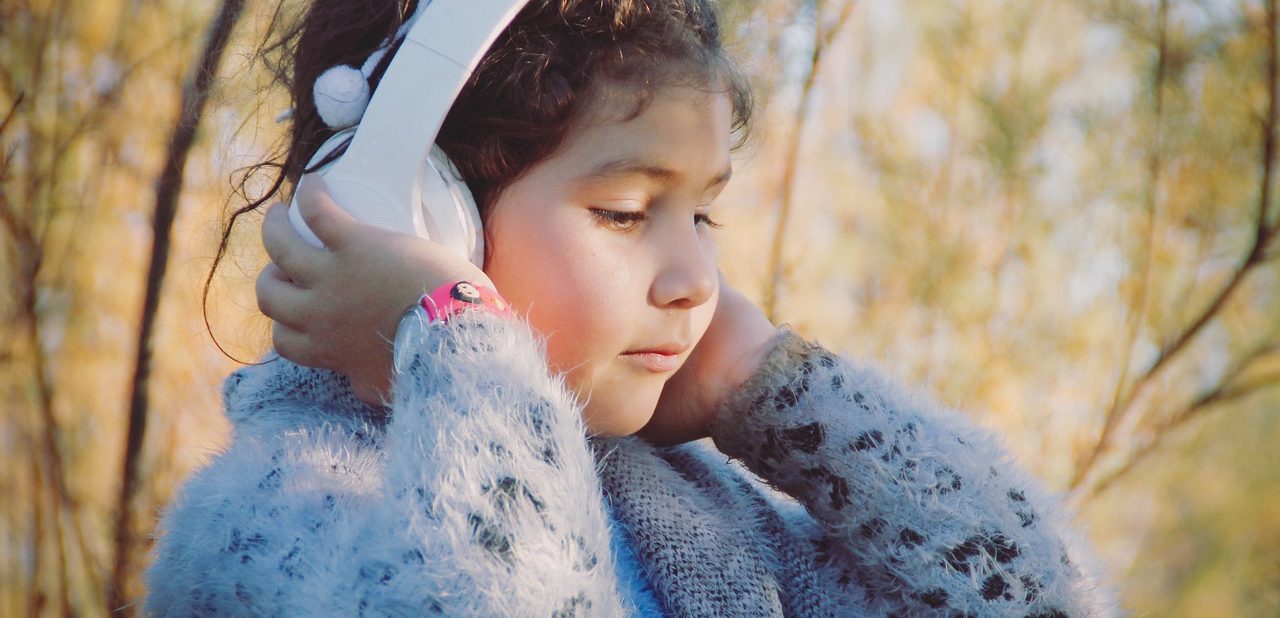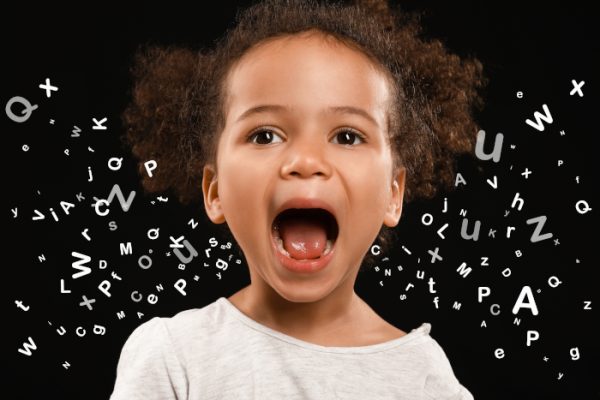
Sensory processing disorder: checklist & symptoms
Sensory processing! We take in information and learn about the world around us through sensory-based experiences. It is important to note that everybody, regardless of the degree of ability, age, gender, etc., has what we call a unique sensory profile, or in other words, the way that they respond and react (or not react) to the sensations around us, what sensory preferences they exhibit, and how this affects overall function. In this blog, I will go over specific symptoms to identify that may be indicative of your loved one’s difficulty processing within a specific sensory system, what’s known as a sensory processing disorder checklist.
With that said, it’s important to note that this blog is intended to help better understand your child’s unique sensory quirks and which sensory system it may be rooted from, rather than diagnosing your child, which should be carried out by a professional who has evidence-based tools and standardized assessments to inform diagnosis. In addition, it’s important to note that sensory processing is NOT a formal diagnosis recognized by the Diagnostic and Statistical Manual of Mental Disorders (DSM-V).
Sensory Processing Disorder Checklist and Symptoms
As an OT, I receive a lot of questions about specific sensory quirks that a parent may be seeing in their child. “My child tends to frequently mouth and chew items.” “My child tends to bump into things a lot.” “My child tends to cover their ears whenever they hear the air conditioner.” “My child can spin and swing for hours without stopping.” These are concerns that I receive frequently with the families I work with.
- Sensory Processing Disorder Checklist
- Tactile defensiveness
- Tactile seeking
- Proprioceptive seeking
- Proprioceptive difficulties
- Auditory defensiveness
- Auditory hyposensitivity
- Olfactory hypersensitivity
- Olfactory hyposensitivity
- Visual hypersensitivity
- Visual hyposensitivity
- Vestibular hypersensitivity
Tactile defensiveness/Seeking
» Tactile Defensiveness
Tactile defensiveness is an over-responsiveness to tactile input. Children with tactile defensiveness may exhibit a low threshold for registering a tactile sense. Tactile defensiveness may look like the following with your loved one:
- Becomes dysregulated, upset, or anxious with light and unexpected touch
- Is bothered by certain textures of clothing, or the tag on clothing
- Experiences difficulties walking barefoot on certain textures, like sand, grass, or carpet
- Exhibits dysregulation when engaging in “messy play” and may demonstrate a need to always keep hands clean
- Demonstrates difficulties with wet tactile mediums, such as soap, lotion, shampoo, etc.
» Tactile Sensory Seeking
Tactile sensory seeking behaviors may occur for a child who is under responsive to touch and may exhibit a high threshold for registering a tactile sensation. These kids may exhibit tactile seeking behaviors in order to register the tactile sense. Your child may demonstrate the following behaviors if he/she is tactile seeking:
- Demonstrates a need to touch and feel everything within their environment
- Touches people or objects to the point of annoying others
- Demonstrates a lack of awareness when their face is messy from food
- Shows little to no reaction to stimuli that should be painful
- Demonstrates a need to engage in messy or wet tactile play
- Related Reading: How to Tame Your Sensory Seeker
Proprioception Seeking/ Difficulties
Proprioception: In each of our joints, we have receptors called proprioceptors that send us information about our body position, weight bearing, stretching, pulling/pushing/lifting against resistance, and movement.
» Proprioceptive Seeking
Proprioceptive seeking behaviors consist of actions that a child may do in order to self-regulate or gain more information about their body position and can be related to a high threshold for proprioceptive input to register. Sensory seeking behaviors may look like the following with your loved one:
- Pursues movement to the point where it interferes with function or their daily routine (fidgeting, rocking, not being able to sit still)
- Becomes overly excited during movement tasks to the point that it interferes with function
- Takes frequent movement or climbing risks that are unsafe
- Falls down on purpose frequently for enjoyment or play
- Seeks to crash into pillows or roll on the floor
- Prefers that their clothing is as tight as possible
- Frequently hits, pushes, or bites other children
» Proprioceptive Difficulties
Proprioceptive difficulties with grading movements are indicative of a child who has trouble with body awareness in being able to recruit the appropriate amount of force to accomplish a functional task. This may look like the following with your child:
- Demonstrates difficulty with being able to produce the appropriate amount of force for Legos or connective toys
- Demonstrates difficulties with being able to grade the appropriate amount of force for writing, coloring, and drawing activities (pushes too hard or too softly)
- Breaks items frequently
- Has difficulty handling delicate items
- May have difficulty understanding and discriminating items that are light vs. items that are heavy
Auditory Defensiveness/Hyposensitivity
Auditory: our auditory system is responsible for hearing, and please bear in mind that the following indicators of a sensory processing challenge are with respect to no formal diagnosis of a hearing problem, or in other words, hearing is intact.
» Auditory Defensiveness
Auditory defensiveness consists of a hypersensitivity to sound, and the child may demonstrate a low threshold for auditory input in order for the sensation to register. Auditory defensiveness may look like the following with your loved one:
- Reacts strongly to unexpected or loud noises
- May hold hands over ears to protect them from sounds
- May have difficulties being productive with background noise present
- May demonstrate difficulties with certain frequencies of sound (a person’s voice, car sirens, certain musical pitches)
- May avoid situations where there is an influx of loud sounds, such as a movie theatre, large crowds, fireworks, etc.
» Auditory Hyposensitivity
Auditory hyposensitivity may be indicative of a child who may demonstrate a high threshold for sound in order for auditory input to register. This may look like the following with your loved one:
- Does not respond to their name being called
- Enjoys making sounds themselves
- Needs verbal directions repeated frequently
- Can be confused when localising a sound
- Turns up music, TV, or sound settings on a screen device to their max capacity
Olfactory Hypersensitivity/Hyposensitivity
Olfactory – Our olfactory system is responsible for our sense of smell.
» Olfactory Hypersensitivity
Olfactory hypersensitivity is indicative of a child who demonstrates a low threshold for smells and may demonstrate an over-responsiveness. This may look like the following with your loved one:
- Refuses to eat certain foods because of their smell
- May register a smell that is faint or hard for others to pick up
- Reacts negatively to smells that otherwise would not bother anyone else
- May avoid going to a place, such as the Dentist, classroom, or a friend’s house because of a smell
» Olfactory Hyposensitivity
Olfactory hyposensitivity is indicative of a child who demonstrates a high threshold for smells and may demonstrate an under-responsiveness. This may look like the following with your child:
- Craves foods that have very strong smells
- Does not register odours that would typically be considered unpleasant
- Smells objects or people as a means of interacting with them
- May have difficulty discriminating between different smells
Visual Hypersensitivity/Hyposensitivity
Visual – It is important that for visual processing challenges, just like an auditory processing difficulty, you must rule out a diagnosis of a visual deficit.
» Visual Hypersensitivity
Hypersensitivity to visual input is indicative of a child who demonstrates an over-responsiveness to visual input or may demonstrate a low threshold for visual input. This may look like the following with your child:
- Sensitivity to bright lights
- May retreat to darker settings in order to enjoy play
- Avoids eye contact
- Can be distracted by subtle visual details in a room (people moving, a clock ticking, certain colours within a room, events occurring outside a window, etc.)
» Visual Hyposensitivity
Hyposensitivity to visual input is indicative of a child who demonstrates an under-responsiveness to visual input or may demonstrate a high threshold for visual input. This may look like the following with your child:
- May have difficulty identifying differences in puzzles, pictures, words, or objects
- May have trouble locating a specific item amongst other items, such as a food pantry, a desk full of supplies, clothes in a drawer, etc.
- Demonstrates difficulty visually tracking items, such as a ball being thrown, a car passing by, a pencil drawing a line, etc.
- Has trouble visually attending to some food items on their plate
- May have difficulties with depth perception
- Can have difficulty visually attending to items with little or no contrast
Vestibular Hypersensitivity/Hyposensitivity
Vestibular – Our vestibular processing system stems from input that we receive from special receptors in our ear, that are triggered to tell us more about equilibrium, gravitational changes, position in space, and the sense of movement.
» Vestibular Hypersensitivity
Vestibular hypersensitivity is an over-responsiveness to vestibular input and may be indicative of a child who demonstrates a low threshold for vestibular input. This may look like the following with your child:
- Avoids swings, ladders, toy cars, slides, etc.
- Demonstrates a fear of heights, even small thresholds like a stair step
- Demonstrates an insecurity about being turned upside down or moving backward
- May lose balance easily and can appear to be clumsy
- Demonstrates difficulties with activities that require good balance and postural control
- Avoids spinning
- May be fearful anytime their feet leave the ground
» Vestibular Hyposensitivity
Vestibular hyposensitivity is an under-responsiveness to vestibular input and may be indicative of a child who demonstrates a high threshold for vestibular input. This may look like the following in your child:
- Can spin for a prolonged period of time without ever getting dizzy
- Can swing intensely for a prolonged period of time with enjoyment
- Enjoys roller coasters or other thrill-seeking activities
- Rocks in place wherever they are sitting
- May love being tossed in the air or any position where their feet are suspended
- Enjoy objects or toys that move them in a linear or circular manner, such as a toy car, bicycle, scooter, or a skateboard
- Enjoys rocking or nodding their head back and forth
Once again, I must reiterate that this sensory processing disorder checklist is by no means a diagnostic tool. This checklist is to help you better understand the different sensory processing systems and accompanying responses that may be indicative of a sensory processing disorder. At the end of the day, you or your child may exhibit some of these sensory responses, but what it all comes down to is does it affect their function, development, and their ability to engage in meaningful activity? If you feel like it does, then it would be best to consult with a professional who can further explore your concerns and provide diagnostic clarification through a standardised assessment and evidenced-based tools/frames of reference.
About NAPA Centre
Article written by the therapists at NAPA Centre, which is a paediatric clinic offering occupational therapy, Physiotherapy and Speech Therapy for children with complex needs. NAPA Centre has 9 locations across the world, including three here in Australia – Sydney, Brisbane and Melbroune. At NAPA Centre, we take an individualised approach to therapy because we understand that each child is unique with very specific needs. We embrace differences with an understanding that individualised programs work better. For this reason, no two therapeutic programs are alike. If your child needs our services, we will work closely with you to select the best therapies for them, creating a customized program specific to your child’s needs and your family’s goals. Let your child’s journey begin today by contacting our team to learn more. www.napacentre.com.au






